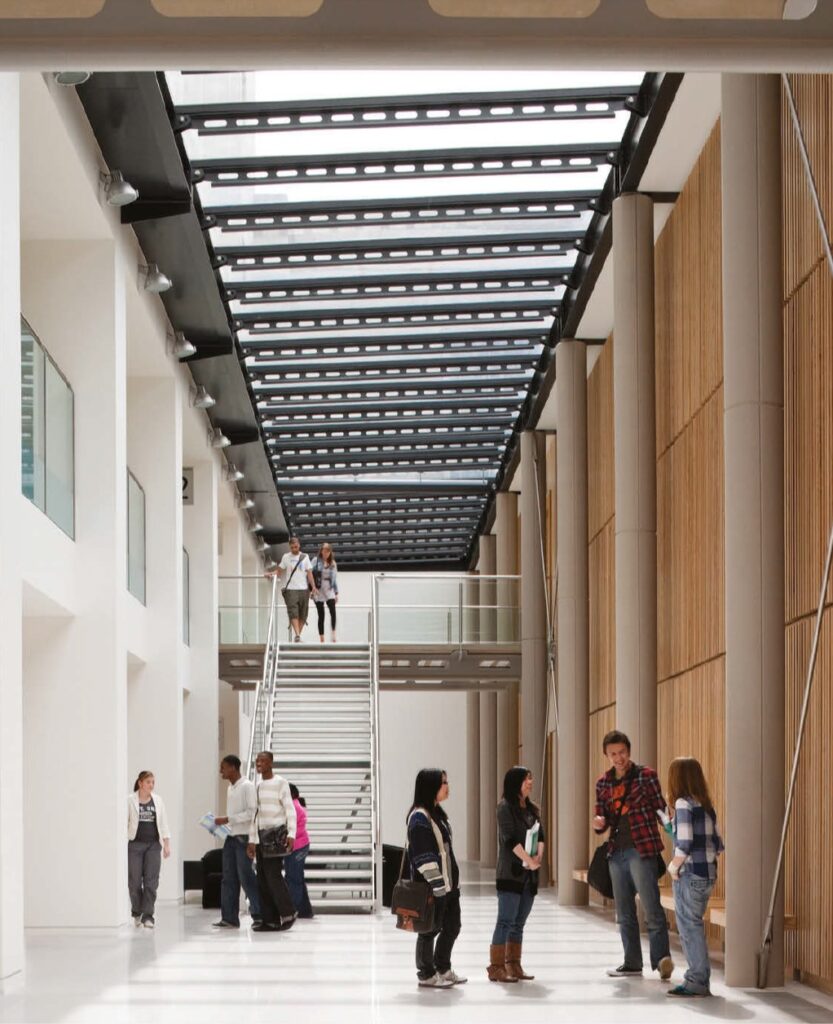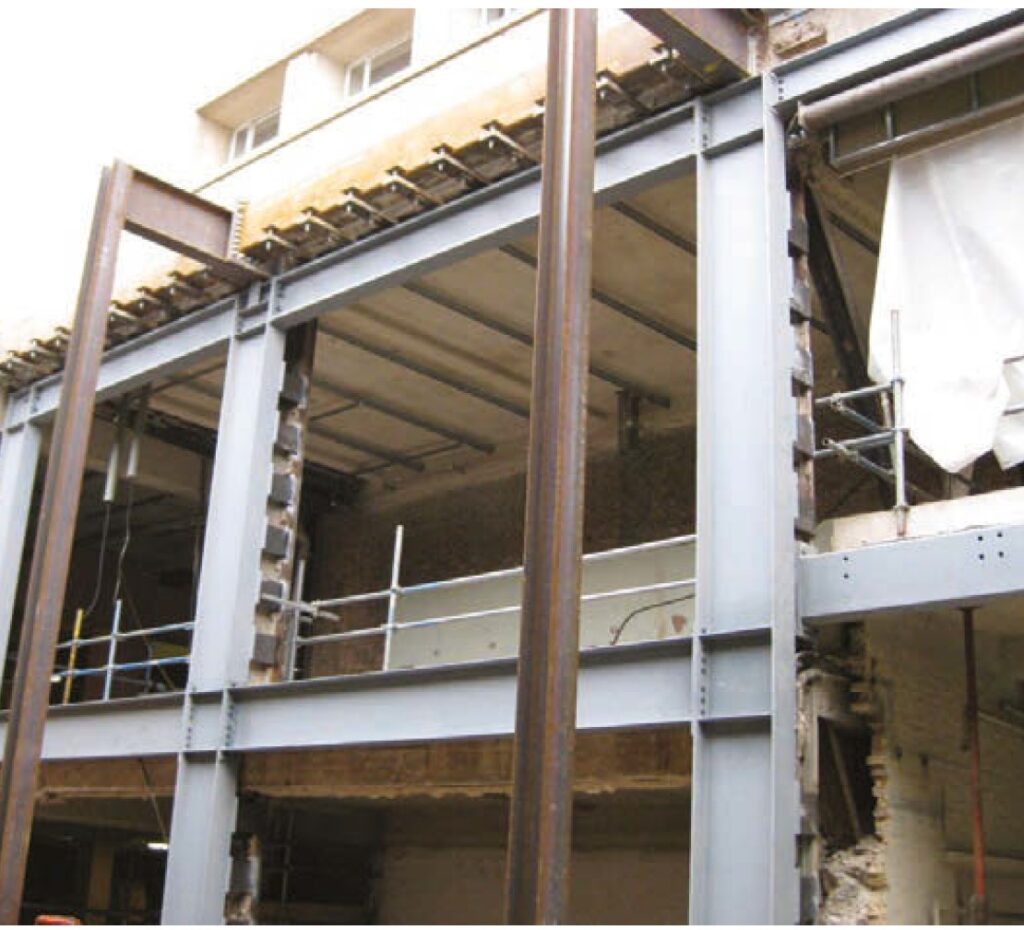The second part of the article on Reuse and Refurbishment of existing buildings explores how the structural engineer can maximize the identified opportunities through design.

The first part of this article introduced the concept of “Reuse and Refurbishment,” it highlighted the benefits of reusing existing building over a new build. It also described how a structural engineer might be able to explore and identify opportunities for refurbishing buildings during the conceptual design stages. However, how do you maximize the identified prospects during the detailed design phase?
See: Reuse and Refurbish: Assessing the prospect at the conceptual stage
There are a lot of factors which a structural engineer must consider when preparing a building for a future reuse or refurbishment at the design stage. For instance, is there the likelihood of a building use being changed from a pure residential development to a mixed-use development? In simplistic term, this entails that the existing building applied loadings would be different from that of the proposed refurbished building. Another instance could be how the construction of the new design would be implemented; perhaps, how will construction be phased? What would be the requirements for temporary works? The first instance given is an example of a structural consideration while the second instance is a practical consideration. As said in the first part of the article, many of these considerations are expected to be specific to each existing building, thus the structural engineer must be very familiar with them.
Structural Considerations
Loading
Where no change is being proposed to an existing building in terms of its original use, the building is often assumed to be structurally adequate, having being validated through structural inspections at the conceptual design stage. Also, where no signs of building distress or any inadequacy is observed, it is also concluded that the structure is adequately carrying the loads. However, where a change in the building use is being proposed, then this would as a consequence, lead to a series of steps to determine the actual capacities of the structural elements present towards estimating the magnitude of strengthening works that may be required.
The basic implication of changing a structure’s use is that it could result in load increase either through building services or more generally from additional floor-imposed loading. The first challenge against refurbishment is justifying additional floor loadings to current codes of practices since it is generally believed that older structures are more conservatively designed and can work to higher capacities. The next challenge is identifying a plausible route through the structure since structures often have multiple
load paths.
A blanket approach to floor loading often results in the conclusion to retrofit the structural elements. However, where a more rigorous analysis has been carried out to determine the actual loadings considering all load paths and being able to actually identify the correct route it is possible to avoid strengthening in many cases 3.
The publication “Office loading in historic buildings” suggests that the actual loading in many older buildings is usually significantly lower than the office floor loading it seeks to accommodate. Thus, a practical approach would be, developing a better understanding of the actual loading and ensuring that the proposed design respects them. Examples of these practical approaches could be limiting the amount of building services, constraining the occupancy levels or even setting uses for specific areas. When assessing loading the structural engineer must be assured that the loadings, he is considering are realistic loadings. He should be able to answer the questions. Are higher floor loadings actually necessary for use? Or is a lower value applicable and more appropriate without compromising structural integrity?
Analysis & Validation
Justifying the adequacy of structural elements will require some analysis and member verification be carried out. Member verification is often carried out using the current codes of practices. It is very important while conducting the checks to use the actual material strengths. Those obtained from historical codes of practice or other referenced documents might be used. Testing of materials off-site might even be more appropriate.
In refurbishing an existing building, the importance of having a full and thorough understanding of how it might have been designed cannot be understated. Many existing buildings have been designed to superseded codes of practice, many of which used the permissible stress design philosophy. This is very different from what we have today, as all typical modern codes uses the limit state design philosophy. Thus, understanding the differences that might exist is very key. In addition, a building designed using the permissible stress design philosophy has huge prospect when considered for refurbishment due to the amount of structural capacity that can be unlocked when validated to modern codes of practices.
Another important thing is being able to predict the movement of the structure which often can be very difficult, however it is very key to understanding the overall structural behaviour of the structure. It would generally be beneficial to carry out a comparative study between the existing and proposed building towards understanding the behaviour of the structure.
Overall, the entire building should be considered holistically. For instance, where an assumed redundant column is to be removed or large voids are to be introduced into a concrete slab or for any other reasons that can significantly impact the existing building structural system and overall stability, the entire structure must be analyzed and validated.
Internal Layout
The internal layout of existing buildings should always be reviewed on the basis of how it might meet a client’s possible future requirement. With respect to layout, an existing building can appear to be constrained, however when considered early enough at the concept design stage, it can provide for an opportunity to something remarkable.
Opening up the spaces in an existing building can transform them significantly. For instance, if alterations can be limited to the removal of non-structural walls, then these could be achieved quickly but deeper intervention should be considered where the potential impact makes this worthwhile.

Take the Newton Building at Nottingham Trent University for instance (Figure 1). This building was made up of redundant workshops and a loading bay subdivided with numerous walls. Opening up the lower levels which were previously blocked off by a combination of vertical steel bracing and concrete shear walls tower radically transformed spaces. The bracing and shear walls have now been reconfigured with new bracing and goalpost frames providing lateral stability (Figure 2).

Foundation
Assessing the foundation of a proposed refurbished building becomes a necessity when there is an increase in loading, either as a result of change in building use or as a result of increase in the number of floors. Older buildings, however, have often being found capable of taking increased loading, since they were designed more conservatively.
Reusing existing foundation has become a key consideration especially in inner city site. 22 Bishop-gate is an example of a building in which 100% of the foundations from three existing buildings were utilized in creating the second tallest tower in the city of London. Reusing existing foundations, no doubt yields significant cost savings and considering the risk associated with groundworks, it provides for a more define construction programme.
Practical Considerations
Phasing
As briefly highlighted in the introductory part of this article, phasing is a very important factor in the consideration of an existing building for refurbishment. Phasing can transform existing buildings, when well planned and executed. It can ensure that existing buildings are still partially occupied while refurbishment is ongoing. This is very attractive especially because the need for a temporary accommodation is eliminated. However, it would always require a well thought out and careful consideration from the project outset and would most certainly influence on the structural design and construction methodology of the existing building.
A key aspect of the reuse of the George Green Library was ensuring continuous operation. A detailed phasing strategy was developed to coordinate construction works with providing an operational facility (Figure 3). This involved first constructing the adjacent extension and lowering the existing basement. After completion of the extension, the existing library operations were ‘decanted’ and re-located into the extension, allowing the major refurbishment of the existing building to be completed. This resulted in no temporary accommodation being required and generated considerable savings on potential ‘enabling’ costs2.

Temporary Works
Refurbishing existing building often requires temporary works to be considered at the project outset as they will influence the structural design and construction methodology. Temporary works require a special input from the structural engineer, especially for refurbished buildings because they play a major role in establishing the financial viability of the project3.
It is necessary for the structural engineer to highlight the temporary works as a critical item and a feasibility studies carried out so that their viability and likely costs can be assessed.
Refurbishing the Newton Building described previously could only have being achieved with early consideration of the temporary works. The sequence of works was carefully planned to ensure that adequate structural supports was in place during each construction stage, not just ensuring that it can be physically installed but also that it can be suitably priced and programmed.
Conclusion
The two parts of this article has presented an overview of the primary areas of concerns when considering an existing building for reuse. In the first part of this article, ways in which a structural engineer might be able to identify the potential opportunities of an existing building for refurbishment was highlighted. The second part has highlighted ways in which a structural engineer can maximize these opportunities during design.
One can conclude from both articles that, a structural engineer must be able to provide a well-informed response to a client’s need in order to make the best use of an existing building, this includes a thorough assessment of the technical feasibility of reusing the building. It is this assessment that will help reveal potential opportunities to add significant value, so the engineer can play a pivotal role in unlocking that value.
Reusing an existing building is not always the answer in every case, but carrying out an early assessment can reveal exciting potential opportunities that would otherwise be missed.
Sources & Citation
- Fernández S., (2020) ‘An introduction to refurbishment: identifying opportunities the feasibility stage,’ The Structural Engineer, 100 (12), pp. 14–18 (Accessed: August 2022)
- Fernández S., (2020) ‘An introduction to refurbishment: Maximizing opportunities at the design stage,’ The Structural Engineer, 100 (12), pp. 14–18 (Accessed: August 2022)
- Addy N. (2014) ‘Making sustainable refurbishment of existing buildings financially viable,’ In: Burton S. (ed.) Sustainable retrofitting of commercial buildings: Cool climates, Abingdon: Routledge (Accessed: August 2022).
Thank You!
